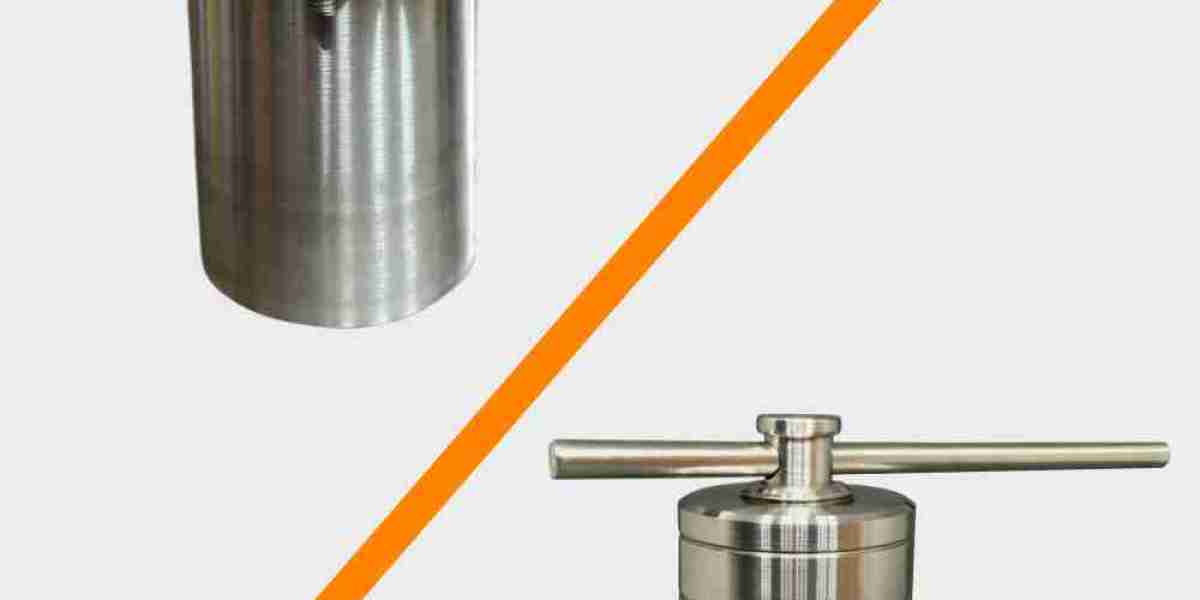An hydrothermal autoclave is a specific device used to perform hydrothermal synthesis. Chemical reactions take place under high temperatures and pressure inside an aqueous setting. This is a crucial device in areas such as nanotechnology, material science and chemistry, which facilitates the development of new substances and materials. However, the high-pressure and extreme temperatures also require the operation must be handled with care to ensure security.
This article will offer specific guidelines regarding how to safely operate the hydrothermal autoclave and highlight the key processes as well as safety precautions and the best methods.
Understanding the Hydrothermal Autoclave Reactor
The fundamental design for a hydrothermal autoclave comprises two primary elements:
- The Outer body (Pressure vessel): Typically made of stainless steel or other alloys with high strength This part houses the contents of the reactor and can withstand the intense pressure that is generated by the reaction.
- Teflon or PTFE Liner Within the pressure vessel there is a Teflon or PTFE liner can be positioned in the vessel, and it is used to hold the reactants. Liners are inert the majority of chemicals, which makes it suitable for high temperature reactions in the autoclave.
The reactor works by securing the reactants inside the liner. The liner is then placed inside the vessel for pressure. This vessel gets heated leading to pressure rising within because of the vaporization of the solvent water, or any other.
Step-by-Step Guide to Safely Operating a Hydrothermal Autoclave Reactor
1. Preparation of Materials
Before beginning the process, make sure you have prepared the reactants.
- Determine Reactants accurately Make sure that the quantities of reactants and solvents are accurately measured to avoid overfilling the liner. This could cause pressure to build up over the reactor's capacity.
- Use the appropriate solvents Use only solvents compatible with material of the reactor and liner. The most popular solvent, but make sure that the other chemicals don't react with Teflon as well as stainless steel.
- Limit the volume of filling Do not use PTFE lines more than 70-80 percent of its volume to provide enough space for expansion of vapor. Overfilling could result in excess pressure.
2. Assembling the Autoclave
Once the reactants have been ready, you can carefully put them into the autoclave.
- Inject the liner of PTFE: Liner Place the PTFE liner and the reactants in the stainless-steel pressure vessel.
- Secure the vessel Check your lid has been securely secured to the vessel that is under pressure. A poor seal could cause leaks or loss of pressure in the operation.
- Verify Gaskets and Seals Examine all seals and gaskets prior use to ensure that they are not damaged. Replace worn out or damaged components to avoid leakage.
3. Setting Operating Conditions
Once the autoclave has been installed, set the correct operating parameters:
- Temperature settings The reactor is to be put in an oven or furnace in order to reach the temperature you want. The majority of hydrothermal reactions take place between 150 and 250 degrees Celsius but some reactions might require temperatures up to 300degC.
- Pressure Monitoring In the reaction, pressure grows as temperatures rise and can reach 20 to 100 bar or higher, depending on the solvents and reactants that are used. Always keep within the recommended pressure limits for the autoclave.
4. Operating the Reactor
It is set to operate:
- Warm the reactor gradually Begin slow heating of the autoclave, and allow enough time to allow the machine to achieve equilibrium. Rapid heating can create thermal stress to the vessel or liner.
- monitor temperature and pressure While the process is in progress be sure to keep track of temperature and pressure levels to ensure that they remain within the safe operating limit. Most reactors come with the pressure gauge or temperature probe that can be monitored in real-time.
- Utilize a controlled Environment It is recommended to use the autoclave within a controlled, well-ventilated laboratory. Always remain at an appropriate distance from the reactor and keep the reactor closed when it's operating.
5. Cooling Down the Reactor
When the reaction is completed the proper cooling procedure is crucial:
- Switch off your Heating Source gradually shut off the heat, and let the autoclave be able to cool naturally. Don't use fast cooling techniques such as water baths as they can cause thermal shock, which can damage the reactor.
- Let Pressure stabilize Allow the internal pressure to fall before allowing the reactor to be opened. A rapid depressurization could be dangerous and may cause damage to the vessel.
- Check the temperature Make sure that the temperature has fallen to below 50degC prior to opening the reactor. Removing the reactor in high temperatures could result in burns, or injuries.
6. Opening the Autoclave
Once the reactor is been cooling:
- Be Careful to Release Pressure Open slowly the valve to release pressure (if it is present) to let go of any remaining pressure before removing the lid.
- Use protective equipment Use protective gloves that resist heat along with protective eyewear when working with the autoclave as there could be some residual heat and pressure within the vessel.
- Take off the liner of PTFE: Liner When the lid has been removed take care to remove the PTFE liner, then look over the contents.
Safety Precautions When Operating a Hydrothermal Autoclave Reactor
1. Wear Appropriate Personal Protective Equipment (PPE)
Always wear the correct PPE, such as:
- Lab Coat: Guards the body against chemical splatters.
- Gloves that resist heat Protect yourself from burns while using the autoclave after heating.
- Security Goggles They protect your eyes from possible collisions with pressure or splashes.
2. Operate in a Well-Ventilated Area
Hydrothermal autoclave reaction can produce vapors or gases particularly if solvents with volatile properties are employed. Be sure that the autoclave has been operating within the presence of a fume hood or in a space that is well ventilated to avoid breathing harmful fumes.
3. Avoid Over-Pressurization
- Do not exceed the tension capacity of an autoclave. The reactor's pressure can result in catastrophic failures and even explosions.
- Monitor Pressure Continuously Utilize an instrument to keep track of the internal pressure throughout operation and keep it within the safe limits.
4. Take care when handling chemicals.
Make sure that the chemicals that are used inside the autoclave can be used with material of the construction. Certain chemicals could corrode stainless steel or cause a reaction to the liner of PTFE which can lead to dangerous conditions.
5. Regular Maintenance of the Autoclave
- Check Gaskets and Seals Before every use, inspect your seals and gaskets and other components for wear and tear.
- Clear the Autoclave after Use Check that the liner and vessel are cleaned thoroughly following each use, to prevent any damage or contamination in the future processes.
- Periodic Pressure Testing Test the reactor's pressure-handling capacity to ensure that it is secure for the duration of its use.
Conclusion
The operation of a hydrothermal autoclave in a safe manner is vital to the effectiveness of your experiment and the safety of your the lab staff. By following the rules in preparing, assembling the reactor, heating and cooling the reactor, and adhering to strict safety procedures to minimize risk and ensure the reliability of your operation. Always be cautious when working with high-pressure equipment and keep in mind that routine maintenance plays an crucial role in the durability and security that the unit.


